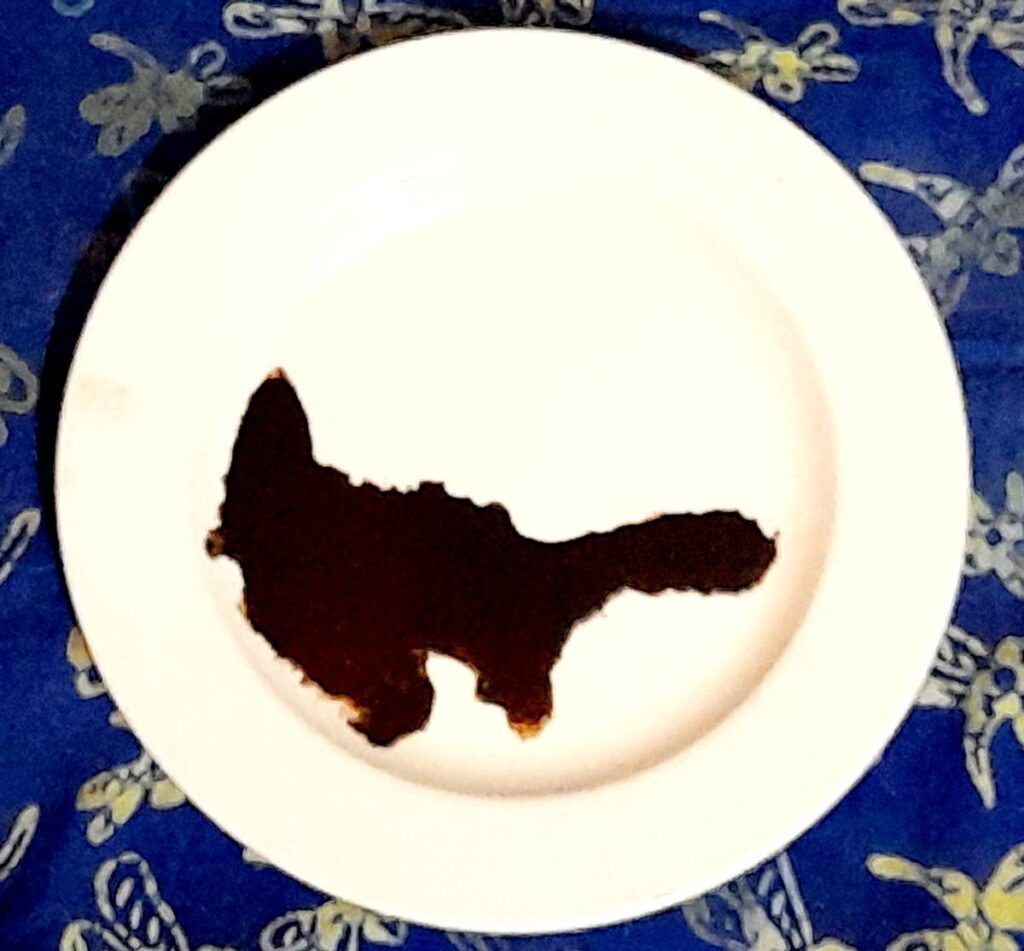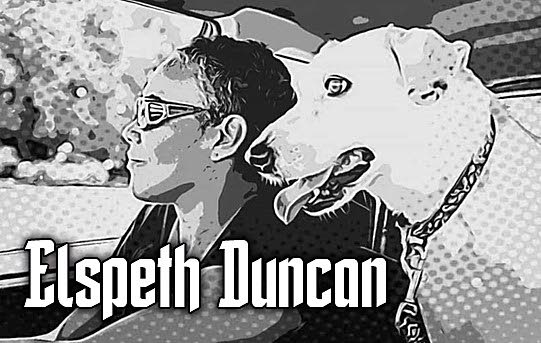What do you see?

After taking the last sips of coffee, my eyes fell on the remnants of the brew at the bottom of the cup.
While some might look at what is left behind as simply "dregs," there are those who will entertain the possibility of deeper meanings existing in the shapes and patterns.
The age-old art of tasseomancy, also known as tasseography and tassology, is a form of divination involving the interpretation of shapes and patterns created by coffee grounds, tea leaves or wine sediments. The etymology of these words is quite straightforward:
Tasseomancy –
tasse (French for "cup"); "mancy" (from the Greek for "divination")
Tassoegraphy – "graphy" (Greek for "writing")
Tassology – "logy" (from the Greek for "study of")
To know more about tasseomancy (originally practised among and spread by tea and coffee traders of yore), you can google it. I will dive straight into what I perceive from my coffee dregs.
It is said that traditional readers of coffee grounds tend to use Turkish coffee. However, in this exercise, my dregs are of the Hong Wing variety, purchased at Pennysavers.
The traditional process of reading coffee grounds involves shaking the cup and draining the remaining liquid onto a saucer. The "reader of the coffee" then examines the pattern of the grounds left in the cup and allows imagination and intuition to "speak" via shapes and symbol association.
As the dregs left at the bottom of my cup were not very distinct, I decided to use the thicker, more plentiful deposits left at the bottom of the French press, I turned those over onto a white plate and observed the resulting form on that larger "canvas." (See photo)
Not surprisingly, the first thing I saw was a dog. The dog, facing to the left of the plate, is looking upward, suggesting hope, setting sights on better days or, perhaps, a glance up to the heavens for guidance and divine help. This makes sense, since it goes without saying that a drastic improvement (perhaps even of a miraculous nature/divine intervention) is required to elevate standards of animal welfare in TT.

In the language of dog tails, the dog formed by the coffee remnants displays a neutral tail (neither up nor down). This relaxed, friendly tail posture typically suggests that all is well and that the dog feels calm.
However, is this reading of coffee dregs saying something about a dog? About animal welfare? Or about me? Am I calm, at ease, looking up with a sense of hope or seeking divine guidance?
In addition to the fact that I am indeed often seeking divine guidance and tend to set my sights on hope rather than despair, I am quite calm now as I write this. It is 3.53 am, cocks and cocricos are serenading, the air is cool (especially in the aftermath of heavy rain) and there is nothing currently ruffling my feathers.
How objective can one be in reading one's own coffee grounds, in the art of tasseomancy? Do we see what we want to see? Do we perceive images associated with what occupies our minds most?
Practically speaking, I probably saw a dog because, on a day-to-day basis, I am quite immersed in matters of an animal-rescue-related nature. Likewise, a palaeontologist would probably look at that same image and see a dinosaur, long neck/head facing right, and short, heavy tail elevated westward.
Out of curiosity, for another perspective, I sent the image to a friend, who saw: "A man with an old naval or military hat – turned clockwise."
Technically, our interpretations of the coffee remnants were less like tasseomancy (which is of a "fortune-telling" nature) and more like a Rorschach test, in which perceptions of inkblots are analysed to determine possible personality characteristics, emotional functioning, subconscious thought patterns, potential psychological disorders, etc.
Either way, both processes are examples of pareidolia: "the tendency to perceive a specific, often meaningful image in a random or ambiguous visual pattern...the human ability to see shapes or make pictures out of randomness" (Merriam-Webster).
There was a time when pareidolia was considered a psychotic symptom, but nowadays it is viewed as a part of the average human experience, with "face pareidolia" being most common (ie people seeing faces in clouds, tree bark, the moon, etc)... likely because of the primary focus on faces in our social programming and interactions.
What does the "pareidolic" in you see in the photo?


Comments
"What do you see?"